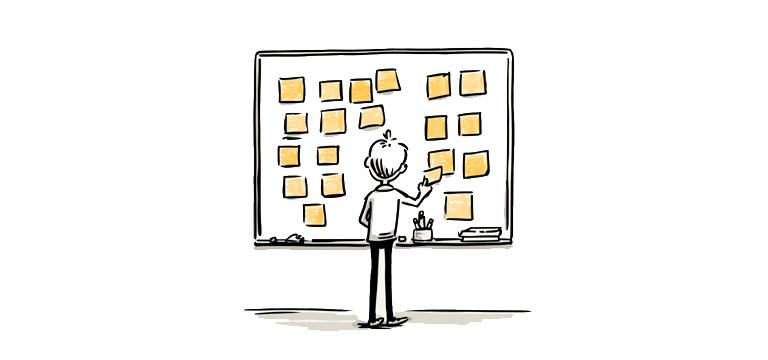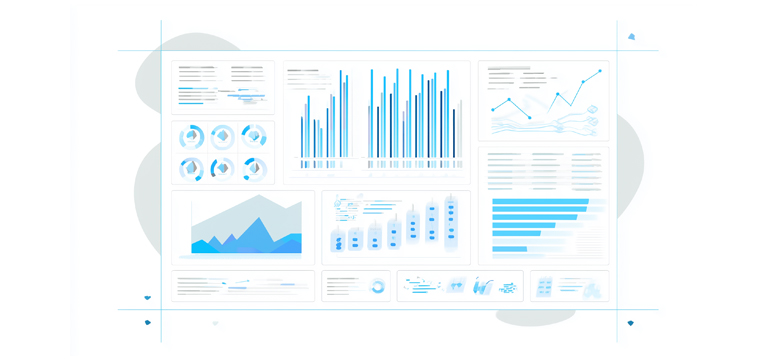Continuous
Improvement &
Enhancements
Iterative product optimization and small feature releases that keep your application evolving. Data-driven changes, UX improvements, and low-risk deployments that add value without drama.
Keep your product evolving with data-driven improvements.
Continuous improvement is the practice of making small, incremental enhancements to your application based on user feedback, analytics data, and business goals. Without the risk and overhead of large feature releases.
Rather than letting enhancement requests pile up in a backlog or waiting for major releases, we implement a steady cadence of UX tune-ups, performance optimizations, small feature additions, and analytics-driven changes that continuously increase user satisfaction and business value.
GET IN TOUCHGET IN TOUCHContinuous Improvement
Intake → Prioritize → Implement → Measure
A data-driven loop that turns user feedback and analytics insights into concrete improvements. Delivered in small, low-risk increments.
1. Intake: Gather Insights
Collect feedback from users, support tickets, analytics data, A/B test results, stakeholder requests, and competitive analysis to identify improvement opportunities.
2. Prioritize: Focus on Impact
Score and rank improvements by business value, user impact, implementation effort, and strategic alignment. Focus on high-value, low-effort wins first.
3. Implement: Ship Incrementally
Build and deploy improvements using feature flags, canary releases, and staged rollouts to minimize risk. Small changes mean faster delivery and easier rollback if needed.
4. Measure: Validate Results
Track metrics before and after changes: conversion rates, engagement, performance, user satisfaction. Validate that changes deliver the expected impact and iterate if needed.
What continuous improvement includes
Continuous improvement sits between pure maintenance (keeping things running) and new product development (building major features). It's the sweet spot for incremental value delivery.
UX/UI Tune-ups
- Simplify complex workflows
- Improve onboarding flows
- Optimize form fields and validation
- Enhance mobile responsiveness
- Improve accessibility (WCAG compliance)
- Polish visual design and consistency

Small Feature Releases
- Add filtering and sorting options
- Implement search improvements
- Add notification preferences
- Build simple integrations
- Extend existing features
- Add export/import capabilities

Analytics-Driven Changes
- Optimize conversion funnels
- Reduce bounce rates
- Improve engagement metrics
- A/B test variations
- Implement tracking for key events
- Personalization based on user behavior

Performance Optimizations
- Speed up slow pages and queries
- Reduce load times
- Optimize asset delivery (images, fonts, code)
- Implement caching strategies
- Reduce bundle sizes
- Improve perceived performance

Low-risk deployment strategies
Small changes carry less risk, but we still deploy carefully using modern deployment practices that catch issues before they impact all users:
- Feature Flags: Gradual rollout and instant rollback without redeploying
- Canary Deployments: Release to 5% of users first, monitor, then expand
- A/B Testing: Compare new vs. Old side-by-side with data-driven decisions
- Blue-Green Deployments: Switch traffic between identical environments
- Staged Rollouts: Internal → beta → 10% → 50% → 100% with validation gates
Data-driven prioritization
Not all improvements are equal. We use frameworks to prioritize what actually matters:
- RICE Scoring: Reach×Impact×Confidence / Effort to quantify value
- Value vs. Complexity Matrix: High-value, low-complexity wins go first
- User Impact Analysis: How many users benefit? How much?
- Business Metrics: Tie changes to revenue, conversion, retention, NPS
- Technical Health: Balance user-facing features with technical debt reduction
- Strategic Alignment: Support quarterly OKRs and company goals
Results reporting & metrics
Continuous improvement only works if you measure results. We track key metrics before and after changes to validate impact and guide future improvements.
Product metrics we track
- Conversion rate changes
- User engagement (DAU/MAU, session time)
- Feature adoption rates
- User retention and churn
- Task completion rates
- Net Promoter Score (NPS)
- Customer satisfaction (CSAT)
Technical metrics we track
- Page load time improvements
- Error rate reductions
- API response time changes
- Mobile performance (FCP, LCP, FID)
- Bounce rate changes
- Browser/device compatibility improvements
- Accessibility score improvements
We provide monthly reports showing improvements delivered, metrics impact, what we learned, and recommendations for the next iteration.
Continuous improvement vs. New development
Continuous Improvement
- Small, incremental changes
- Low risk, fast delivery (days/weeks)
- Optimizes existing functionality
- Data-driven priorities
- Iterative approach
- Part of support/maintenance
New Product Development
- Major features or new products
- Higher risk, longer timeline (months)
- Builds entirely new capabilities
- Strategic priorities
- Waterfall or agile development
- Separate project/initiative
Most successful products need both: continuous improvement to optimize what exists, and new development for strategic initiatives. We can handle both, or focus on continuous improvement while your team handles major features.
Why choose Singlemind for continuous improvement
Product thinking, not just engineering
We bring product strategy expertise to improvement work. We don't just implement requests. We help prioritize, challenge assumptions, and ensure changes align with business goals.
Data-driven validation
Every improvement is an experiment. We set up proper analytics, track metrics, and validate that changes deliver the expected impact. If something doesn't work, we iterate or roll back.
Low-risk deployment practices
Feature flags, canary releases, and staged rollouts mean small changes don't become big incidents. We deploy confidently knowing we can validate and roll back quickly if needed.
Transparent reporting
Monthly reports show what we shipped, metrics impact, and lessons learned. You always know what value continuous improvement is delivering to your business.
Frequently asked questions
Common questions about continuous improvement and feature enhancement services.
Continuous improvement covers small, high-impact changes—UX refinements, microcopy tweaks, workflow adjustments, performance optimizations, and modest feature extensions. New product development is better for net-new capabilities or major redesigns. We help you route each idea to the right track so you get momentum without overloading your roadmap.
We prioritize enhancements using data-driven frameworks like RICE scoring (Reach × Impact × Confidence / Effort) and value-versus-complexity matrices. We consider user feedback, analytics, business metrics, strategic alignment, and technical health, so we focus first on changes that touch many users, solve real problems, and can be shipped safely and quickly.
We treat continuous improvement as a parallel lane to your core roadmap. Your internal team focuses on larger initiatives, while our enhancements-as-a-service stream handles smaller wins and optimizations that often get deprioritized. Regular coordination keeps both lanes aligned so incremental improvements support, rather than compete with, your strategic projects.
Every improvement is tied to one or more metrics—conversion, retention, time-to-task, support tickets, or performance—and we capture baselines before changes go live. After rollout, we compare those metrics over a defined window and report back; when appropriate, we use A/B testing so decisions about keeping or iterating on changes are based on evidence rather than opinions.
We group related tweaks, use feature flags, and roll out changes in controlled phases to manage UX impact. The emphasis is on incremental, clearly beneficial improvements rather than disruptive shifts. The goal is a product that feels continually cared for and refined, not one that is perpetually reinventing itself.
Most backlogs grow endlessly and rarely shrink. Our continuous improvement service gives those requests a structured path to delivery: intake → prioritization → implementation → measurement. Because we dedicate capacity to this loop, meaningful product improvements actually ship, are measured, and inform what we do next.
Continuous improvement in software is the practice of making small, incremental changes—driven by data and user feedback—to gradually improve usability, performance, and business outcomes. Instead of waiting for big releases, you ship frequent, low-risk enhancements that compound over time and keep your product feeling actively cared for.
Traditional retainers often blur the line between maintenance, support, and new feature work, making it hard to see what you are actually getting. Our enhancements-as-a-service model clearly focuses on incremental improvements: we maintain a prioritized improvement backlog, dedicate capacity to small wins, and measure impact so you can see how continuous improvement is evolving your product month over month.
Related Services
Software Support
Manage IT risks before they hurt your business. We keep your product secure, up to date, and running smoothly, so you can focus on your business.
VIEW DETAILSVIEW DETAILSProduct Strategy
A successful product starts with a clear strategy. We help you shape ideas into a plan that balances user needs, business goals, and technical feasibility for success.
VIEW DETAILSVIEW DETAILS